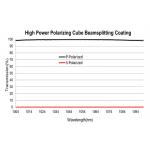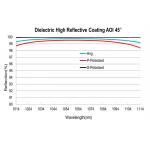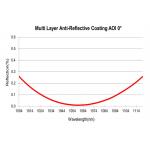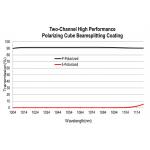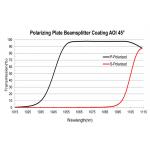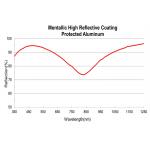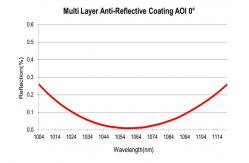Overview: Anti-reflective coatings are used on the surfaces of the substrates
to reduce the amount of light reflected from each surface and
improves transmission, which is important in low-light
applications, and prevents the undesirable effects like ghost
images particularly associated with multiple reflections. Normally, the more layers in the anti-reflective coating, the more
reflections are neutralized. And depending on the design, each
anti-reflective coated optic will reflect a certain color. Usually,
it does not affect the performance. Our advanced thin film coating technology allows us to produce
hard anti-reflective coating to resist from scratch, waterproof and perform well in harsh
enviroment. Despite of the following most commonly used anti-reflection
coating, we also support special design like triple band
anti-reflective coating of 589nm, 1064nm&1319nm. Anti-reflective Thin Film Optical Coating Graph: Single layer MgF2 Anti-reflective Coating | | | | R<1.5% @ central wavelength | Ravg<2.0% @ central wavelength | Multi-layer Anti-reflective Coating | | | | R<0.25% @ central wavelength | Ravg<0.5% @ central wavelength | Broadband Multi-layer Anti-reflective Coating | | | | R<0.5% @ 450-650nm | Ravg<1.0% @ 450-650nm | Dual Wavelength Anti-reflective Coating | | | | R<0.25% @ 1064nm & R<0.5% @ 532nm | Ravg<0.5% @ 1064nm & R<1.0% @ 532nm |
| 